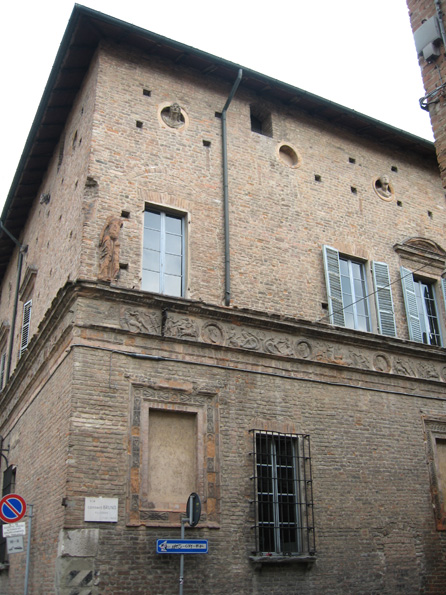Palazzo Landi, Piacenza on:
[Wikipedia]
[Google]
[Amazon]
 The Palazzo Landi is a
The Palazzo Landi is a
Nuovissima guida della città di Piacenza con alquanti cenni topografici, statistici, e storici
by Tipografia Domenico Tagliaferri, Piazza de' Cavalli, #55, Piacenza (1842); Page 197-198. The palace was constructed by uniting some medieval houses located on the site. It was commissioned by Manfredo Landi, and the architect was Giovanni Battagio. The building now has offices of the Council of Justice, then the seat of the Finance Court. It is notable for the marble sculpted main portal.
 The Palazzo Landi is a
The Palazzo Landi is a Renaissance
The Renaissance ( , ) is a Periodization, period of history and a European cultural movement covering the 15th and 16th centuries. It marked the transition from the Middle Ages to modernity and was characterized by an effort to revive and sur ...
-style palace located on Via dei Consiglio #15 in the historic center of Piacenza
Piacenza (; ; ) is a city and (municipality) in the Emilia-Romagna region of Northern Italy, and the capital of the province of Piacenza, eponymous province. As of 2022, Piacenza is the ninth largest city in the region by population, with more ...
, northern Italy
Italy, officially the Italian Republic, is a country in Southern Europe, Southern and Western Europe, Western Europe. It consists of Italian Peninsula, a peninsula that extends into the Mediterranean Sea, with the Alps on its northern land b ...
.
History
TheLandi family
The Landi were a noble family from Piacenza, in northern Italy. From 1551 to 1582, they were princes of the Val di Taro, now in the province of Parma, at that time in Papal States, papal territory. Their principality is sometimes called ''Lo St ...
was a prominent noble family in Piacenza. Agostino Landi was granted territories in Borgotaro by the Holy Roman emperor Charles V
Charles V (24 February 1500 – 21 September 1558) was Holy Roman Emperor and Archduke of Austria from 1519 to 1556, King of Spain (as Charles I) from 1516 to 1556, and Lord of the Netherlands as titular Duke of Burgundy (as Charles II) fr ...
. But intrigues, including the accusation of being part of the conspiracy against the Farnese in the Sanvitale Conspiracy
The Sanvitale conspiracy () was a plot to assassinate Ranuccio I Farnese, Duke of Parma and Piacenza, and members of his family at the baptism of his new-born son Alessandro in 1611. The conspiracy may also be referred to in Italian as the , ...
, led to the expropriation by 1582 of most of their properties. This palace has since been owned by the government of Piacenza.by Tipografia Domenico Tagliaferri, Piazza de' Cavalli, #55, Piacenza (1842); Page 197-198. The palace was constructed by uniting some medieval houses located on the site. It was commissioned by Manfredo Landi, and the architect was Giovanni Battagio. The building now has offices of the Council of Justice, then the seat of the Finance Court. It is notable for the marble sculpted main portal.
References
External links
{{coord, 45.05221, 9.69920, type:landmark_region:IT, display=title Landi Landi Neoclassical architecture in Emilia-Romagna